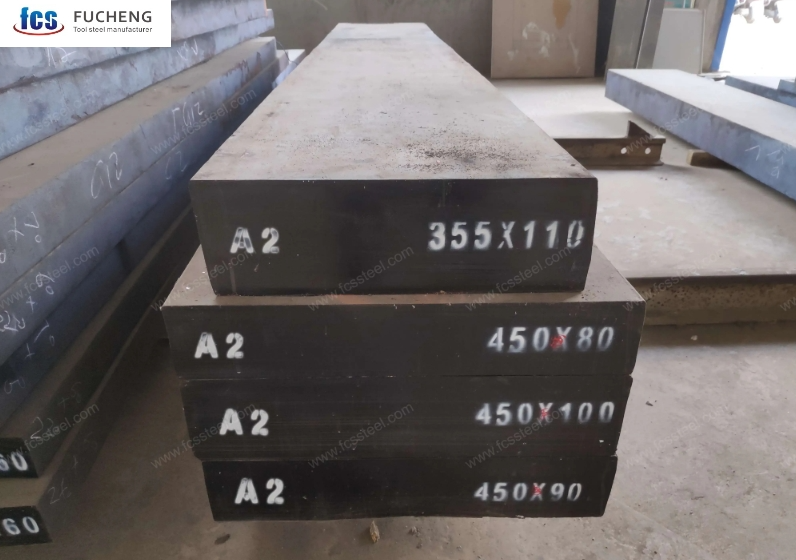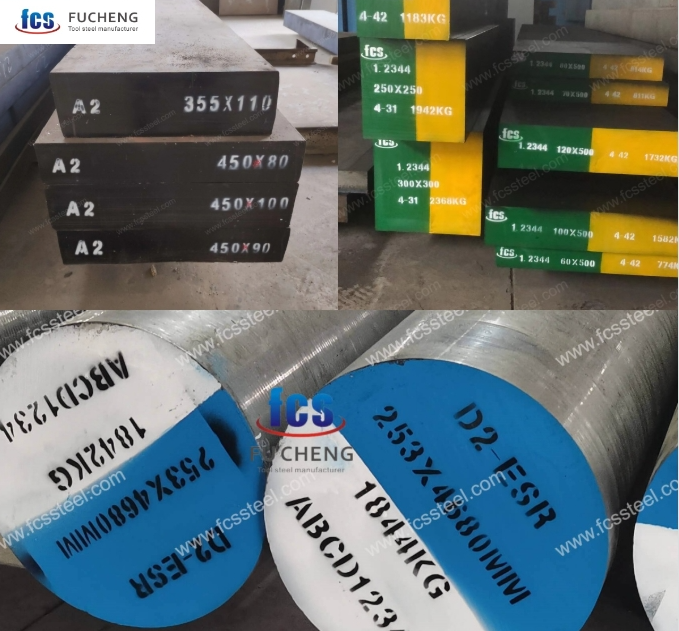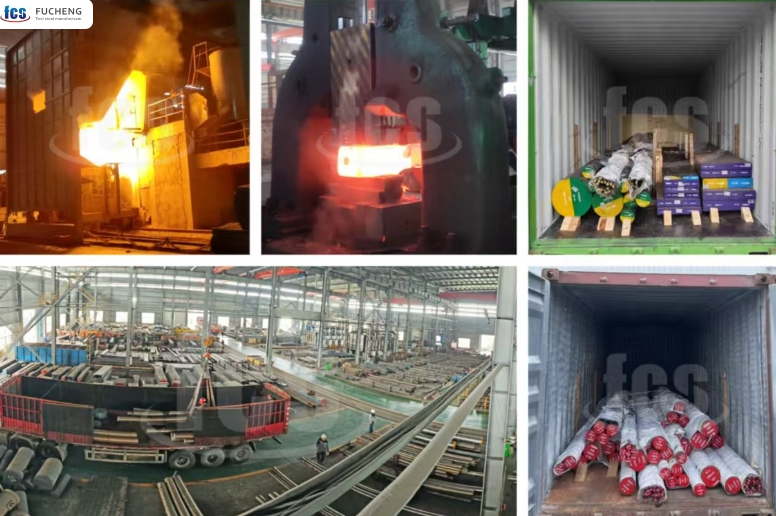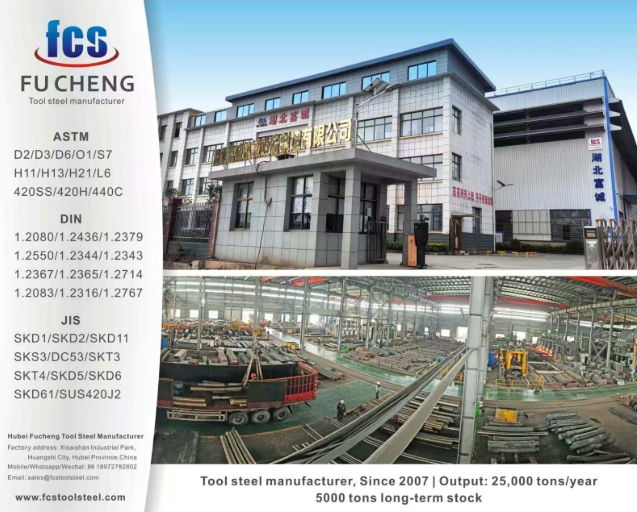In the complex world of industrial manufacturing, tool steels play a defining role in shaping performance, longevity, and efficiency. Among them, A2 tool steel has earned recognition for its balance of toughness, dimensional stability, and resistance to wear. It is widely used in cold work applications such as blanking dies, forming tools, shear blades, and punches. For global procurement managers and buyers, understanding where A2 tool steel originates, how it is produced, and what each sourcing region can offer is essential for designing a reliable and cost-effective supply chain.
This article provides an in-depth analysis of the primary sourcing countries for A2 tool steel, examining their strengths, challenges, and market dynamics. By comparing various procurement regions, buyers can gain insight into global opportunities and make informed decisions for long-term partnerships.

1. The Role of A2 Tool Steel in Global Manufacturing
Before exploring sourcing destinations, it is important to recognize the industrial significance of A2 tool steel. A2 belongs to the cold work tool steel family, characterized by air-hardening capability and balanced properties:
- Hardness and wear resistance: While not as hard as D2, A2 offers sufficient wear resistance for most cold work processes.
- Toughness and ductility: Superior to many high-carbon steels, reducing risk of chipping or catastrophic failure.
- Dimensional stability: Air hardening reduces distortion during heat treatment, a critical factor for precision tools.
- Versatility: Used across automotive stamping, aerospace fastener production, electronics forming, and general engineering.
These properties make A2 a global commodity. However, sourcing strategies differ based on geography, industrial base, and trade policies.
2. Major Sourcing Countries for A2 Tool Steel

China
China is one of the world’s largest producers and exporters of tool steels, including A2. Several factors explain its dominance:
- Cost competitiveness: Economies of scale and local resource advantages reduce production costs.
- Capacity: Numerous mills across coastal provinces supply massive domestic demand while supporting exports.
- Export orientation: With extensive logistics infrastructure, Chinese suppliers can ship to North America, Europe, and Southeast Asia efficiently.
However, buyers need to balance these advantages with challenges such as verifying quality consistency and navigating complex supply chains. To mitigate risks, many importers focus on working directly with factories rather than traders, ensuring full traceability and certification.
United States
The U.S. remains a respected sourcing destination due to its strict metallurgical standards and advanced refining processes. Buyers often turn to American sources when high-performance tooling is required, especially in aerospace, defense, and high-precision automotive applications.
Key advantages include:
- Reliability of certification: U.S. made A2 tool steel often meets or exceeds ASTM and SAE requirements.
- Technical expertise: Many mills work closely with R&D departments, offering material customization.
- Stable domestic demand: Ensures a robust industry base, though it limits large-scale exports.
The drawback is higher pricing, which can make U.S. sourcing less attractive for cost-sensitive buyers.
Germany
Germany’s long history of metallurgical innovation positions it as a premier source for A2 tool steel. Known for precision and material purity, German suppliers focus on:
- High-end tooling applications: Such as fine blanking, precision stamping, and complex mold components.
- Advanced refining: Use of vacuum degassing and ESR (Electro-Slag Remelting) for cleaner steel.
- Integration with engineering sectors: Close ties with Germany’s automotive and machinery industries drive quality demand.
Buyers sourcing from Germany typically prioritize performance over cost. Logistics from central Europe to neighboring markets also adds an advantage for European buyers.
Sweden
Although smaller in scale compared to China or the U.S., Sweden has an outsized influence in specialty tool steels. Swedish steelmaking emphasizes:
- Clean steel technology: Low inclusions and uniform grain structures.
- Sustainability: Commitment to environmentally friendly production, appealing to buyers with ESG priorities.
- Specialty niches: High-demand segments where reliability outweighs cost concerns.
Swedish A2 tool steel often carries a premium price, but buyers value the long service life of tools made from it, which lowers lifecycle costs.
Japan
Japan remains an important supplier of A2 tool steel due to its precision-driven metallurgy and close link with electronics, automotive, and fine engineering. Characteristics include:
- Tight tolerances: Japanese mills are known for maintaining highly consistent heat treatment and hardness ranges.
- Innovation culture: Continuous improvements in alloy composition and processing.
- Strong domestic demand: Ensures high production standards, although exports are selective.
Japanese A2 is often chosen by manufacturers requiring absolute stability and precision in tooling.
India
India’s growing steel sector has begun to play a role in supplying A2 tool steel to international markets. Key features include:
- Competitive pricing: Lower labor and operational costs.
- Expanding capacity: New steel plants focused on both domestic and export markets.
- Regional advantage: Strategic location for shipments to Middle East, Southeast Asia, and Africa.
While quality control is improving, some buyers exercise caution by requesting additional third-party inspections or certifications.
Austria
Austria has a reputation in Europe for specialty steels, including A2. Its advantages are:
- Heritage in tool steel metallurgy.
- Close integration with European manufacturing hubs.
- Focus on high consistency and specialty grades.
Austrian A2 tool steel is often associated with reliability and uniformity, appealing to buyers in precision engineering and mold making.
3. Comparative Advantages Across Regions

To better illustrate the sourcing landscape, let’s compare the above countries across key procurement criteria:
- Cost Efficiency: China, India
- Certification Reliability: U.S., Germany
- Premium Quality: Sweden, Japan, Austria
- Balanced Option: China (when paired with strong supplier verification)
For example, while China may deliver cost benefits in bulk A2 procurement, a German or Swedish source may provide superior consistency for high-value tooling. Buyers must assess application-specific requirements before selecting the region.
4. Trends in Global Procurement of A2 Tool Steel
Several macro trends influence where buyers source A2 tool steel:
- Shift toward direct factory sourcing
Importers increasingly bypass intermediaries to ensure traceability and reduce costs. - Rising ESG requirements
Buyers in Europe and North America prefer sources like Sweden that prioritize sustainable steelmaking. - Diversification strategies
Companies avoid reliance on a single region to minimize geopolitical or logistical risks. - Integration with digital procurement
Online platforms and mill certifications make global sourcing more transparent.
5. Challenges in Sourcing A2 Tool Steel
While opportunities are diverse, challenges persist:
- Price volatility: Influenced by raw material costs and energy fluctuations.
- Supply chain disruptions: Shipping congestion, geopolitical conflicts, and pandemic impacts.
- Certification discrepancies: Variations in standards across regions (ASTM vs. DIN vs. JIS).
- Counterfeit risks: Particularly in high-volume trading hubs, making supplier verification essential.
Procurement managers must remain vigilant and incorporate risk management practices such as multi-sourcing, auditing, and contractual safeguards.
6. Example Comparisons with Other Grades
To illustrate procurement differences, consider two widely used alternatives:
- D2 Tool Steel: Offers higher wear resistance but less toughness compared to A2. Buyers often choose D2 for longer-lasting punches and dies, but at higher cost.
- 1.2344 Tool Steel (H13 Equivalent): A hot work tool steel, favored in die-casting and extrusion. Unlike A2, it withstands thermal cycling, making it unsuitable for substitution but useful for procurement comparison.
These examples highlight why procurement managers often source multiple tool steel grades from the same country, optimizing logistics and building stronger supplier relationships.
7. Strategic Procurement Recommendations
- Define application needs first: Balance toughness, wear resistance, and cost before shortlisting regions.
- Audit suppliers directly: Especially in high-volume regions like China and India.
- Balance global and regional sourcing: Mix cost-effective supply with premium specialty sources.
- Secure certifications: Demand mill test reports, third-party verification, and traceability documentation.
- Plan logistics proactively: Account for shipping times, tariffs, and customs procedures.
8. FCS Tool Steel Factory – A Strategic Partner for A2 Procurement

For buyers seeking not just material but partnership in global procurement, FCS Tool Steel Factory (also known as Fucheng Tool Steel) stands out as a reliable option. Unlike trading channels, FCS operates as a direct manufacturer, offering full control over production quality, metallurgical consistency, and supply reliability.
By maintaining large inventories of A2, D2, and 1.2344 tool steels, FCS ensures that wholesalers, distributors, and industrial users avoid costly production delays. The factory also supports custom dimensions, tailored heat treatment, and flexible batch sizes, adapting to diverse procurement needs.
For procurement managers aiming to streamline supply chains and reduce risks, partnering with FCS is more than a transaction—it is a step toward building long-term sourcing stability. If you are seeking a dependable global supplier for A2 tool steel, now is the time to consider direct cooperation with FCS Tool Steel Factory.
Conclusion
The global landscape of A2 tool steel sourcing reflects a dynamic balance between cost, quality, and reliability. From China’s scale-driven efficiency to Germany’s high-end metallurgy, Sweden’s sustainability, and Japan’s precision, each sourcing country provides unique advantages. India and Austria add further diversity, ensuring buyers can tailor procurement strategies to specific needs.
For procurement professionals, success lies in careful evaluation of supplier capabilities, regional strengths, and long-term risk management. With increasing emphasis on traceability, certification, and technical collaboration, choosing the right sourcing partner has never been more critical.
By analyzing sourcing countries strategically and considering partners like FCS Tool Steel Factory, buyers can secure a steady, high-quality supply of A2 tool steel—supporting the demanding industries that depend on this versatile alloy.
